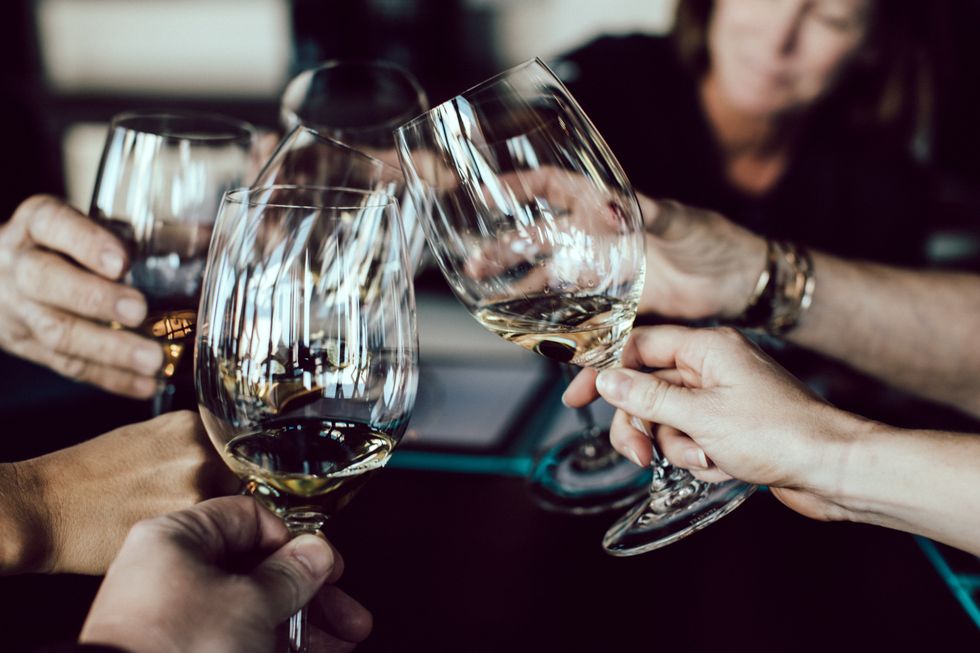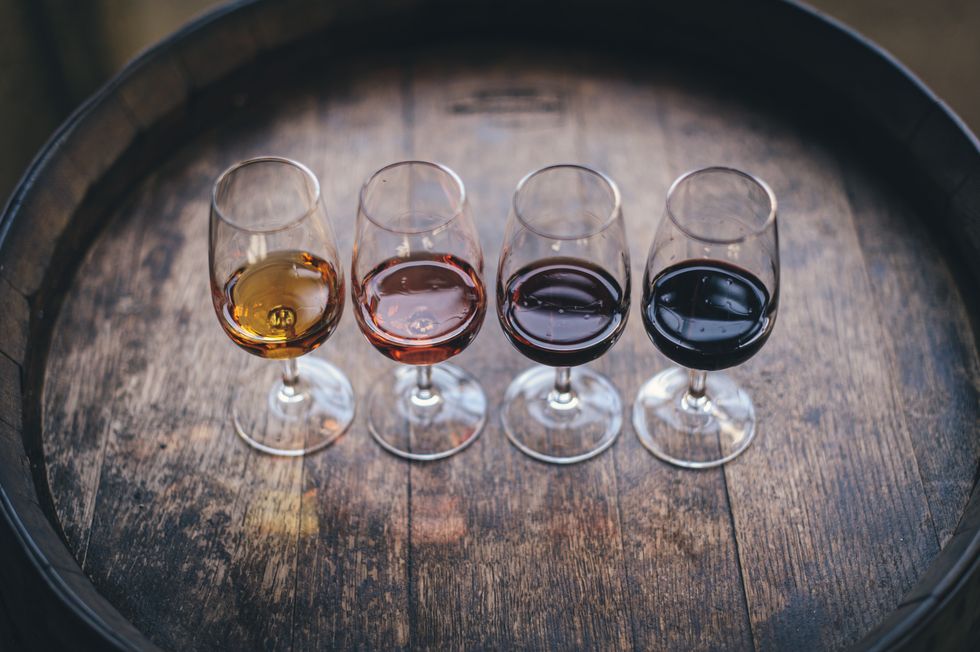
A lot of people our age (21-25) don't really drink wine because they want to appreciate it, they drink it to get "f*cked up" in a "classy" way.
***Reality check: if you're still blacking out every time you drink, it's not classy OR healthy***
So if you're reading this article, this probably means you want to learn to appreciate wine a little bit more, or learn a few new facts that you can whip out in front of your Barefoot chugging friends (I like Barefoot), or maybe you're just looking to feel more comfortable going into a winery's tasting room. It can be intimidating when your server is whipping out terms like "oak-aged" or "tartrate crystals."
I started working at a winery recently, and my employers have really taken me into the industry fold. I'm going to be learning and doing everything: from tasting room, to harvesting, to making, filtering, sampling (yes, that's right ;)) and so on. I had always known that wineries work hard to make their product, but I'm only just learning that creating the right taste practically a science.
While I most certainly do not know everything, I feel like I know more than the average 21-year-old about vino, so I wrote this article to help YOU navigate the wine world!
Part I of IV: advice for when you first start going out to wineries.
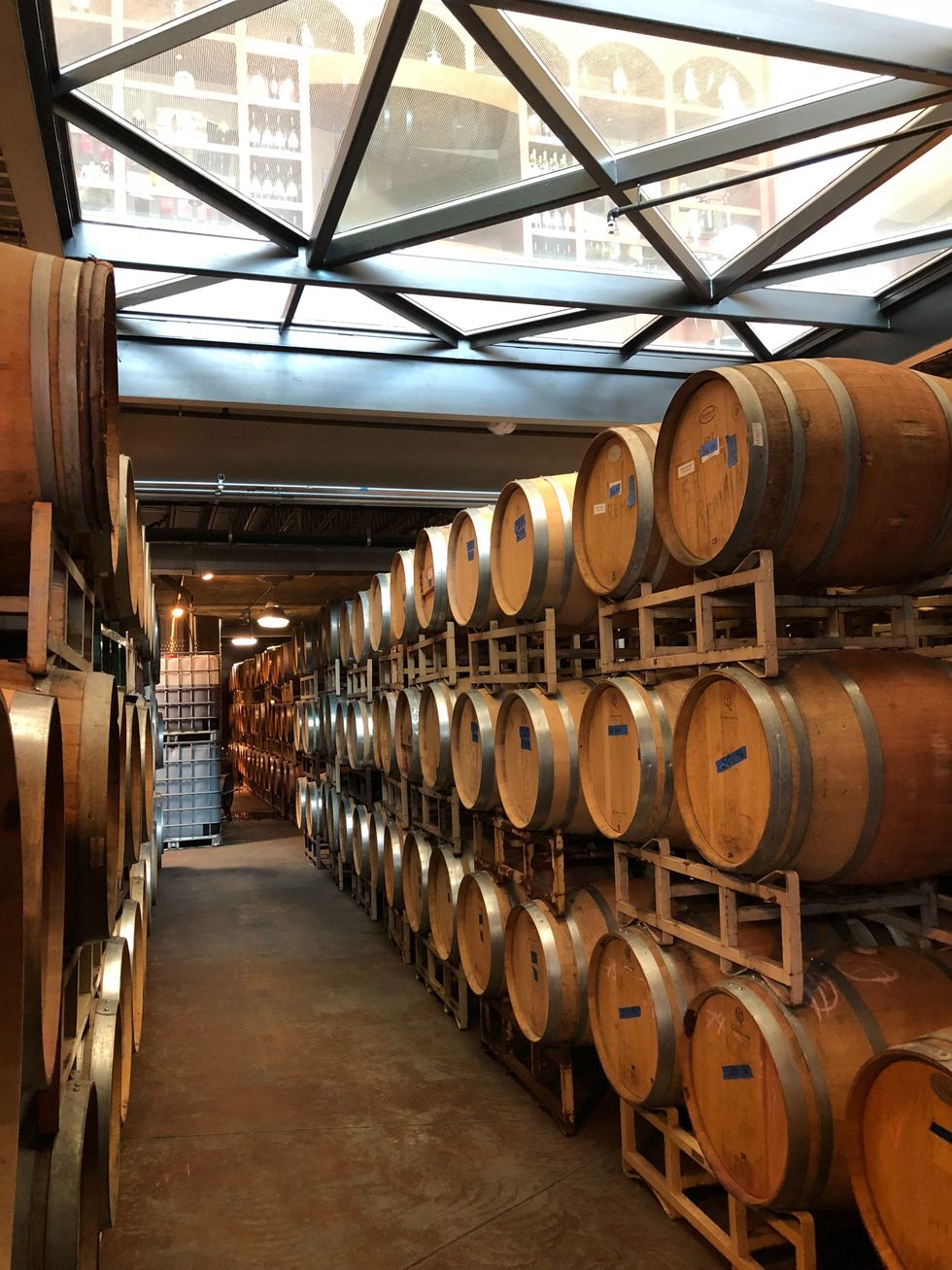
1. Figure out what kind of wine drinker you might be.
If you haven't ever been to a winery, and the most experience you have drinking it is at parties or Grandma's for holiday dinner, you should start your wine journey by figuring out what kind of wine you *might* gravitate to.
But Alexis, isn't the point of going to a winery to experience new wines?
Well, yes. But you can probably narrow down what kind of flight you would want to try if you know what kind of drinks you like: do you have a sweet tooth? Are you more of a dirty martini kind of person? If you like sweet drinks, tell your server that. Not a fan of sugar? They'll set up dry tasting.
Not sure about about either? Most wineries offer middle-of-the-road wine styles that may be a little sweet, but not too dry either. We call them off-dry.
2. Pick a place based on your choices.
Part of the reason I suggested you contemplate what kind of wine drinker you might be is because based on what your taste profile may be, you will want to start off with a winery that will match your palate.
I live in Maryland, and my state has the wonderful nickname of "America in miniature." We have a lot of little microclimates, which change what kind of grapes work best in what region. The winery where I work currently has a strong showing of sweet wines, whereas some of the other wineries in the neighboring county have a better dry wine production.
NOTE: It is important to know that just because a winery may have a reputation for making good sweet reds or good dry whites does not mean they don't have good wines in general. What another person hates, you might love and vice versa!
3. Go with friends!
That's just because it's more fun! And a lot or wineries will have an amazing atmosphere, especially if the tasting room is on the property where the grapes are grown. It makes a great little getaway. Also, you may or may not need a DD.
4. Trust the server.
Odds are the person who is running your tasting knows a little bit about wine and has served plenty of people with all kinds of palates. Don't be afraid to tell them that you aren't sure what your taste profile might be, and that you have some idea. They'll guide you along based on that particular winery's offerings.
Some wineries offer a dry flight and a sweet flight, or a make your won flight for a set price. The ones with make your own can be hard to navigate, because there are often lots of choices! But again, ask questions! Your server can help you find something you'll like.
NOTE: Some wineries have a set list of tastings for the day, but if something that they offer in the bottle piques your interest, ask to try it! The worst thing they can say is no.
5. Let yourself experiment!
The greatest thing about going to a winery is that you get to try new things. You might find that you really like oak-aged dry whites and sweet reds. You might also be pleasantly surprised that you like something you thought you would hate.
6. Buy the wines you like at the winery.
It's cheaper to buy a local wine at the winery itself because you don't have to pay the up-charge a liquor store would charge so they can make a profit. Plus, you can share a bottle that you picked yourself from the winery with your friends and family. (It always feels cool to be able to say that you picked it out!)
That being said, sometimes price does NOT indicate the quality of a wine! I love some $100 wines, but I love some of my $10 wines just as much. What is important is that YOU find a wine YOU like!
Part II of IV: What to buy at the liquor store

You can, of course, continue going to wineries and buying your bottles there, but you'll still want to try other styles and brands. That's when you get to go to the liquor store and be intimidated once more, this time by the variety of selection you'll have.
So what do you do when you don't get a chance to try a wine before you buy it? Take a leap of faith, yes, but you can still take an educated guess!
1. Remember what you like.
Based on your previous experience, you should look at the labels of bottles and read the blurbs liquor stores have written/printed about the wine and try to find a wine you're willing to try.
2. Ask for help.
Some liquor stores that have a large selection of wine probably have a staff that can answer a few questions, one of them being "what sweet/dry/white/red wines do you have?"
3. Google is #bae.
You should absolutely use Google if you can't find anything written about the wine on or around the bottle. If it is something that really intrigues you, look up the winery that produced it because usually their website will tell you about the wine's flavor.
NOTE: Do NOT look up the variety/blend of wine that it is and ask Google if such-and-such is a sweet/dry wine, because not everyone makes their varietal/blended wine the same (i.e. Winery A might make their Riesling more sweet than Winery B). Avoid the problem by going to the Winery's website.
Part III of IV: The restaurant menu
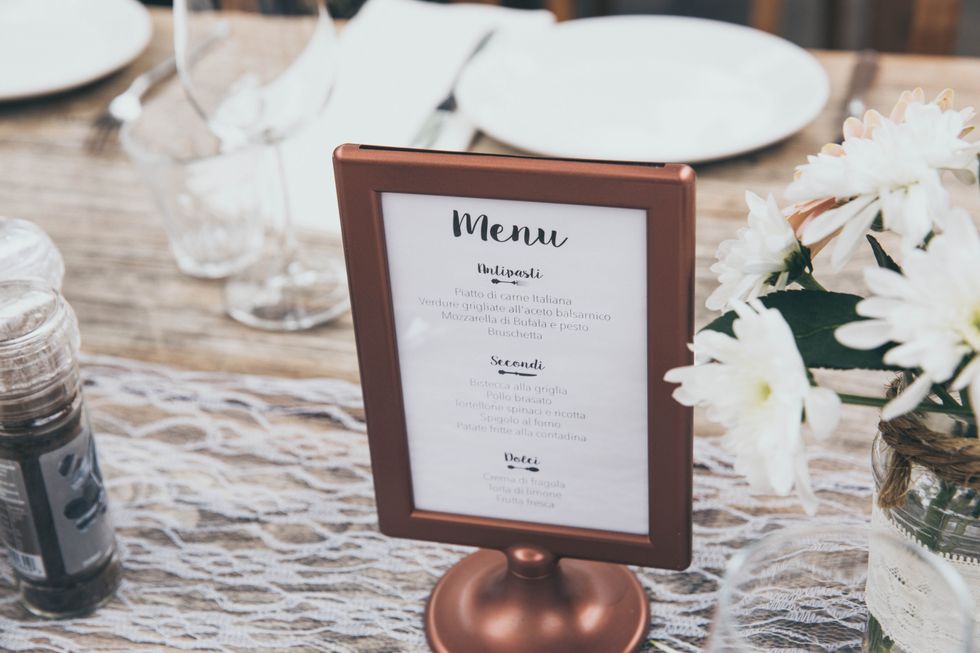
1. Unless otherwise stated, most wine menus go White Wines, Red Wines, Dessert Wines with the top of each category being the driest, and the bottom being the sweetest.
Some menus will go by region, and others (menus that are very small) will just go dry to sweet, regardless of color.
2. The first number is the glass price, the second is the bottle price.
So if you see this:
Alexis B's VWinery 2009 Merlot, Maryland........... 7/20
You know that the glass price is $7 and the bottle price is $20.
3. Ask your server for a pairing.
Depending on the restaurant, some serving staff may be very good with pairings, or know their menu well enough to tell you what you should pair with what.
NOTE: The old adage "white wines go with white meats, red wines go with red meats" is pretty true, but I've had some fabulous white pairings with red meats before.
4. Ask your friends what they like, and buy a bottle.
It will be so much cheaper if you can all agree on one wine and buy the bottle rather than buying by the glass. This also holds true for buying glasses v bottles at wineries.
Part IV of IV: Lingo
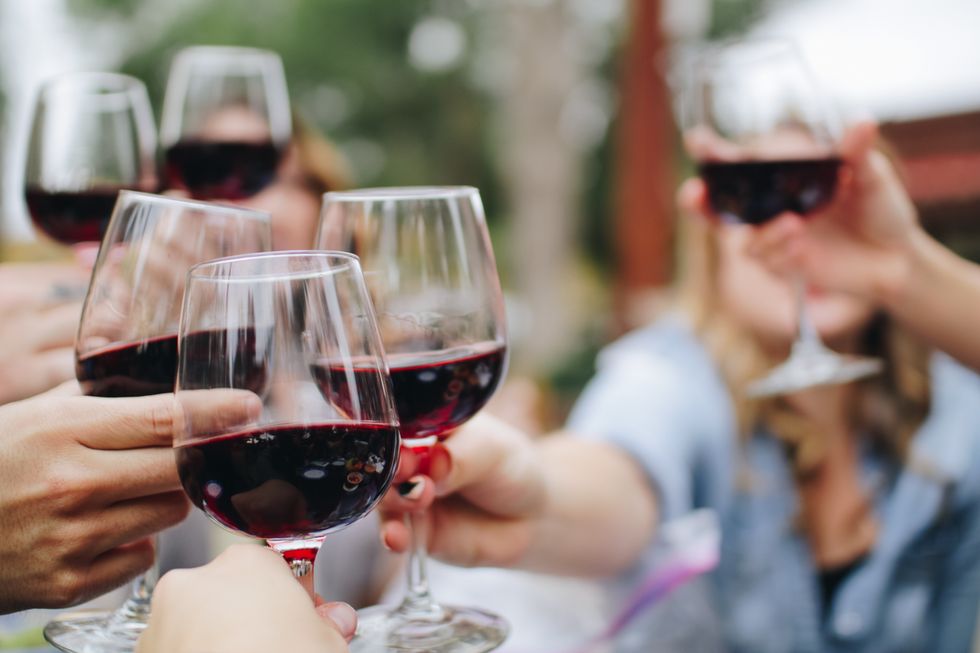
Congratulations! You have survived my crash course Wine Appreciation 101! That wasn;'t so hard, was it? It's easy to feel overwhelmed, but just remember: every person who know a lot about wine started out knowing absolutely nothing and making some terrible pairings.
Now go and experience some great wine, show off your knowledge, and be sure to grab a glass for me ;)
